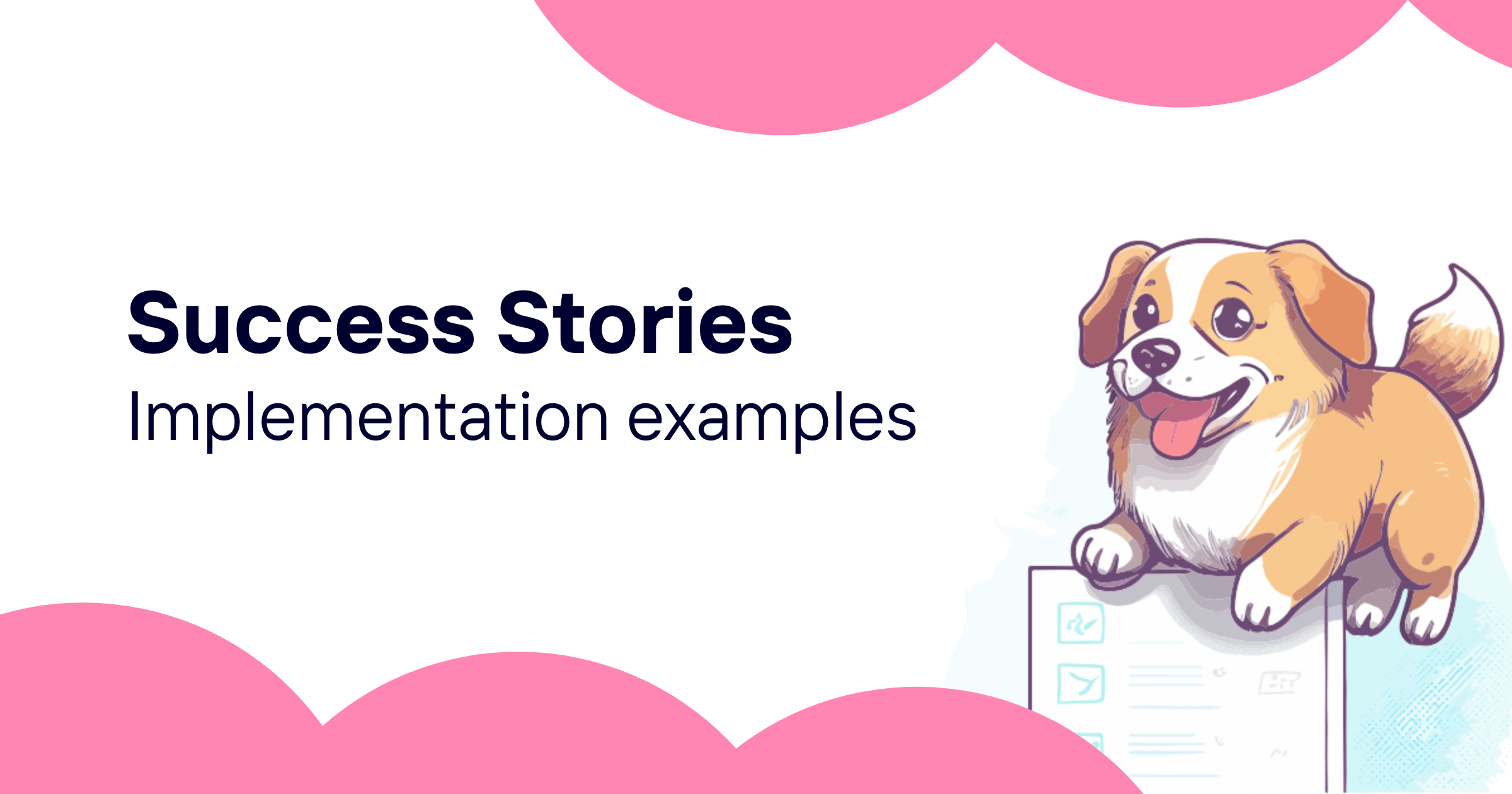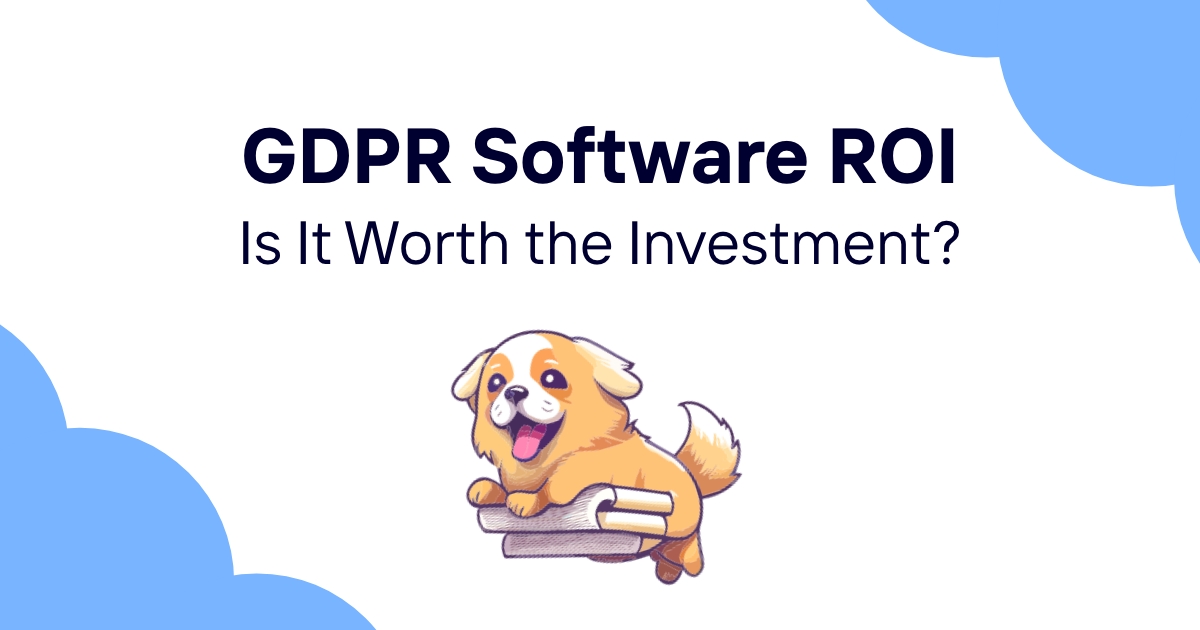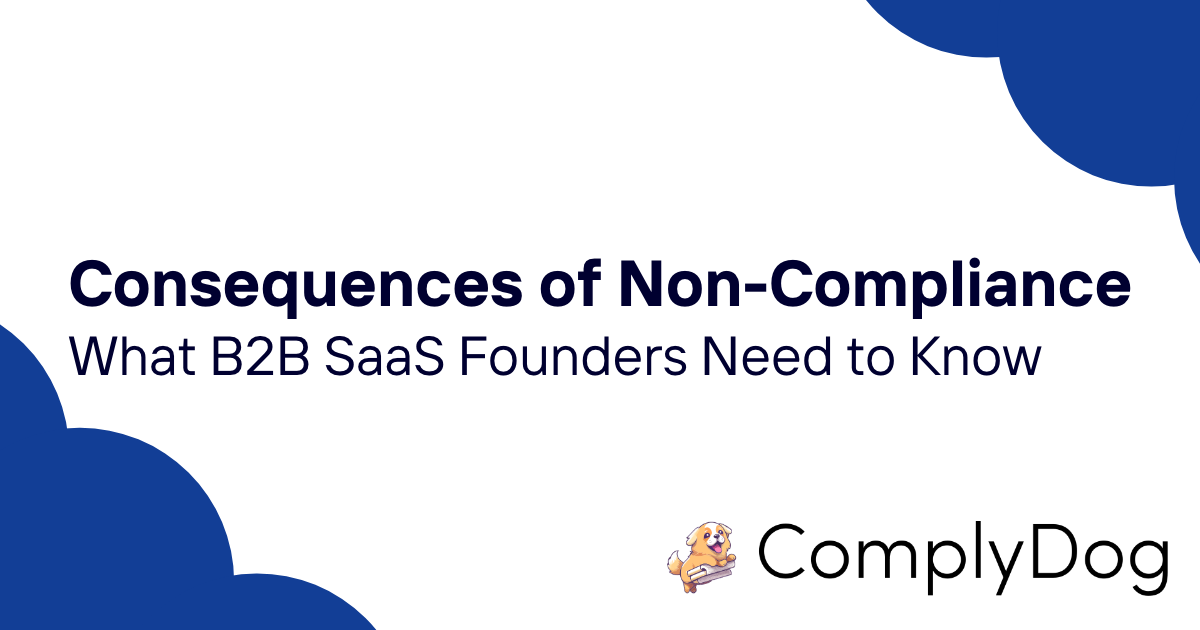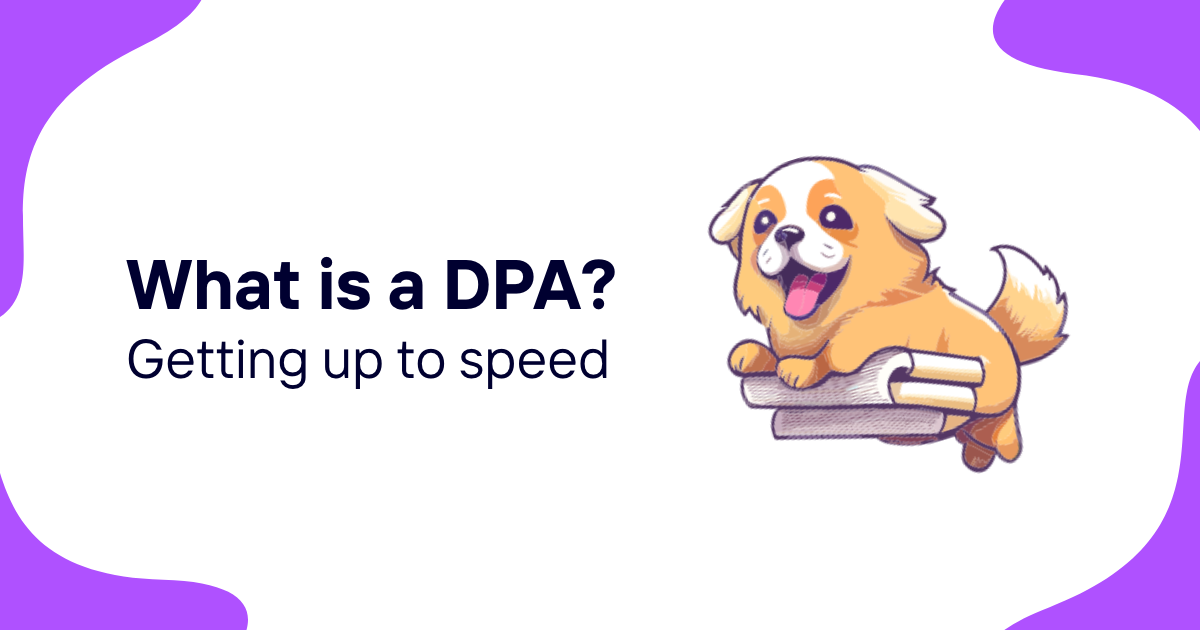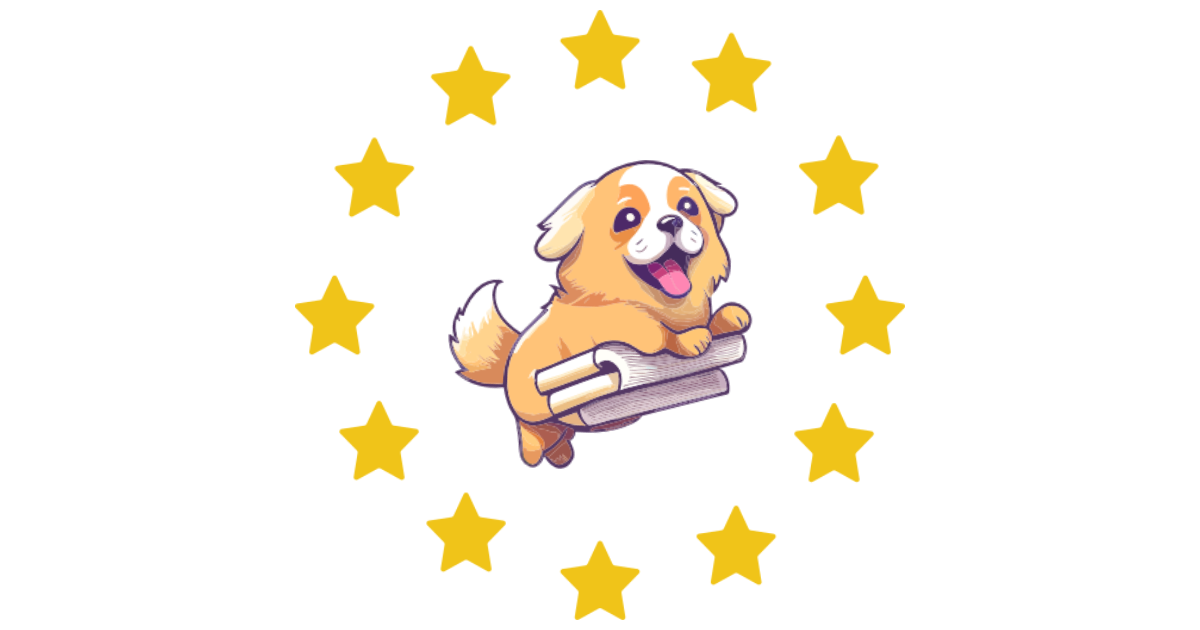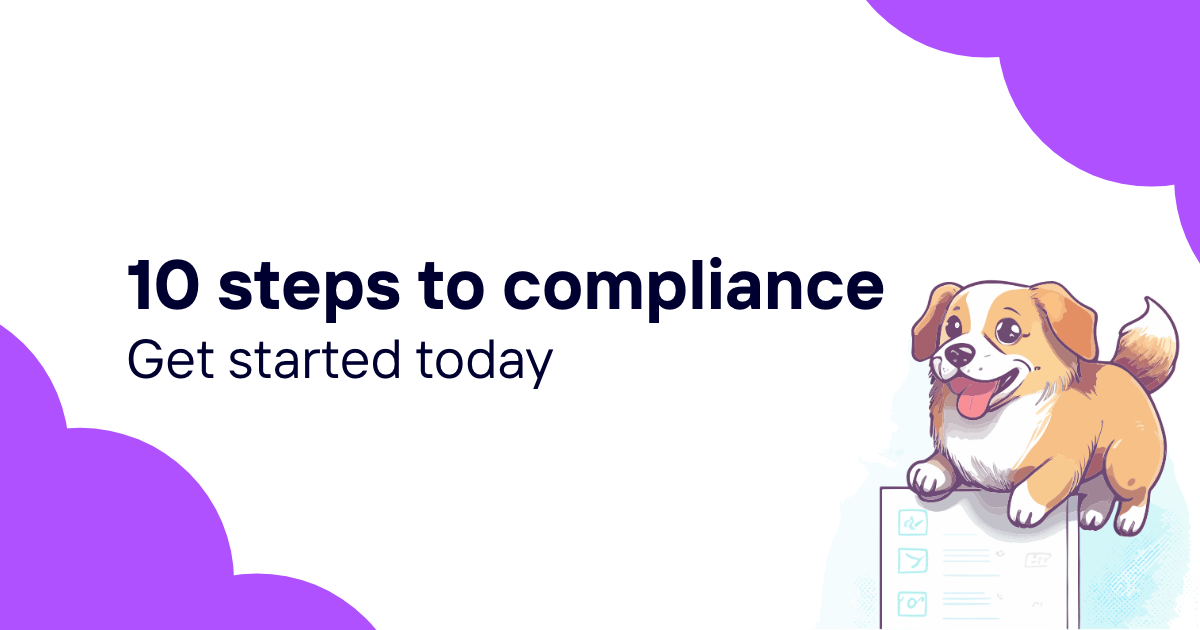As a B2B SaaS company that's collecting data from European citizens, you're probably aware of the General Data Protection Regulation (GDPR).
You may understand the concept of GDPR and its importance, but implementing it might seem daunting.
There's no need to panic because we're here to assist you!
In this article, we're going to share several hypothetical GDPR implementation examples about companies similar to yours. We'll illustrate what GDPR compliance could look like in different B2B SaaS businesses and the impact this could have on areas such as product design, marketing strategies, and organizational culture.
Through these GDPR implementation examples, you'll gain practical insights on how to effectively implement GDPR in your own company.
If you're new to GDPR and looking at how to make your business compliant, consider checking out our GDPR compliance checklist.
Let's dive in!
GDPR's Impact on Product Design
GDPR rules tell us that your product's design is key to keeping data safe. In other words, it's not just about how you use data but also about how your product deals with data from the start. People often call this 'privacy by design.'
'Privacy by design' is a part of data protection. It means you add privacy and data safety to a system for its whole life. That's from the first design to the final product.
Here's a simple way to think about it: Instead of adding privacy parts after making the product, you think about privacy from the start. It's like putting sugar into a cake mix instead of putting it on top after baking the cake.
GDPR Implementation Example #1:
Let's imagine a SaaS company - we'll call them TaskFlow. TaskFlow offers a project management tool for other businesses. Before GDPR, they had a basic data protection setup. But with GDPR, they saw a chance to make big changes for the better.
They redesigned their tool to give users more control over their data. For instance, they added clear settings to let users choose what data they share. They also built-in automatic data deletion for old projects. In short, they made data privacy a key feature of their tool, not just a background function.
The result? Not only did TaskFlow meet GDPR standards, but their users loved the changes. The new privacy-focused features made users trust TaskFlow more, and trust can turn into customer loyalty. In the end, following GDPR helped TaskFlow to offer a better product and grow their business. And that shows the true value of 'privacy by design.'
Revising Marketing Strategies Under GDPR
The GDPR has changed how companies approach marketing. One of the biggest areas it influences is how businesses get and manage consent from their customers. For a marketing campaign to be GDPR-compliant, customers have to give clear and informed consent to their data being used.
GDPR Implementation Example #2:
Let's consider a hypothetical CRM software called PartnerPulse. Before the GDPR, PartnerPulse used to pre-tick the consent box in their email subscription form. But, with the GDPR rules, they had to change this practice and develop a detailed GDPR implementation plan. They started asking for explicit consent from the customers for email subscriptions and provided clear information about how the customer data would be used.
PartnerPulse also made it easy for users to manage their preferences and withdraw their consent at any time. This was all part of respecting user choice and control over their data, as required by GDPR.
The result? PartnerPulse experienced a rise in customer engagement. They found that customers who gave active consent were more likely to engage with their emails and more likely to trust the company. Customers knew what they were signing up for and had control over their preferences, which increased their trust in PartnerPulse.
So, PartnerPulse's story shows that GDPR compliance is not just about following the rules. It's also about building trust with customers and improving engagement. This could be a lesson for other B2B SaaS companies: Revising marketing strategies to be GDPR-compliant can have positive effects on customer relations and engagement.
Streamlining Data Processing
In the world of GDPR, how you handle data matters a lot. GDPR sets strict rules about how businesses can process personal data. This means companies need to be careful about what data they collect, how they store it, and how they use it.
The consequences of not complying with GDPR can be steep. Under GDPR, companies can face fines of up to €20 million or 4% of their global annual turnover, whichever is higher, for serious violations. This can include breaches like failing to secure personal data or violating core principles of processing, such as conditions for consent.
For lesser infractions, like not having records in order or failing to notify the supervising authority and data subject about a breach, the fines can go up to €10 million or 2% of the company’s global annual revenue.
GDPR Implementation Example #3:
Let's consider a hypothetical payroll processing software called PayPioneer, which operates in the B2B SaaS industry. Before GDPR, PayPioneer used to collect a large amount of user data, even some that they didn't actually use. However, when GDPR was introduced, they had to review their data processing methods.
GDPR compelled PayPioneer to simplify their data processing procedures. They began collecting only the necessary data, which reduced the amount of data they had to handle. They also ensured to inform users about the collected data and its intended use. Additionally, they implemented secure practices for storing the data they gathered.
This shift to efficient and compliant data processing wasn't just about following GDPR rules. It also brought operational benefits to PayPioneer. Managing less data meant fewer resources were needed for data storage and management. This helped the company save money and focus resources on other important tasks. Plus, the increased transparency about data processing helped build trust with their customers.
PayPioneer's experience demonstrates how GDPR can motivate companies to enhance their data processing practices, resulting in improved efficiency and customer trust. It's a beneficial situation for both businesses and customers.
Building a GDPR-friendly Company Culture
Creating a company culture that aligns with GDPR requirements is vital.
A GDPR-friendly culture is a workplace where all individuals understand and support the principles outlined in the General Data Protection Regulation (GDPR). This involves recognizing the importance of data privacy, understanding the rights of individuals whose data is collected, and handling personal information securely and responsibly.
In a company with a GDPR-friendly culture, these principles are deeply ingrained in its core values. This mindset affects all aspects of the company's activities, ranging from product development and marketing strategies to customer service. The focus is on valuing customer privacy and rights and ensuring that their data is treated with the highest level of care.
GDPR Implementation Example #4:
Consider the case of FinTechSolutions, a financial management platform. When GDPR was introduced, they saw it as a chance to improve their operations and customer relationships. They started with educating all staff members about GDPR. This wasn't just a one-time thing. Instead, they made it a part of their ongoing training programs. They ensured every employee understood what personal data is, why it's important to protect it, and how to handle it correctly.
From developers and sales reps to customer service and management, everyone at FinTechSolutions had to learn the GDPR rules. It wasn't just about avoiding penalties. It was about respect for their customers. By treating personal data with care, they showed customers that they value their privacy.
Their efforts have paid off. Today, customers appreciate their dedication to data security. As a result, FinTechSolutions has seen an increase in customer trust and loyalty. Plus, they have a smoother workflow. With everyone knowing how to handle data correctly, there are fewer mistakes and less time spent fixing them.
The FinTechSolutions example shows that GDPR isn't just a set of rules to follow. It's a mindset. It's about putting your customers first and respecting their privacy. It might seem like a big task at first, but with ongoing training and commitment, any B2B SaaS company can build a GDPR-friendly culture.
Managing Data Breaches Under GDPR
Data breaches can be a nightmare for any company. GDPR sets clear rules on how to handle such incidents. It requires companies to report breaches to relevant authorities within 72 hours of discovery, and if the breach poses a high risk to individuals' rights and freedoms, those individuals must also be informed directly.
GDPR Implementation Example #5:
Let's consider a hypothetical sales intelligence solution, RevenueRadar. They faced a significant challenge when they discovered a data breach. The good thing is they had a well-planned GDPR-compliant protocol in place, which they implemented immediately.
On realizing the breach, RevenueRadar's response team sprang into action. They contained the breach and launched an investigation to assess the scope and potential impact. At the same time, they notified the relevant data protection authority within the mandatory 72 hours. The company communicated openly with the authority, offering regular updates as more information about the breach came to light.
Next, RevenueRadar assessed the potential risk faced by the impacted users. Recognizing the possibility of harm, they promptly contacted these customers. They provided transparent details about the breach, the potential risks involved, and the actions they were taking to address the problem. Additionally, they offered guidance on further measures that customers could adopt to enhance their personal protection.
Throughout the process, transparency and prompt action were the keys to RevenueRadar's handling of the incident. Although they faced a challenging situation, their GDPR-compliant approach helped to minimize the damage and maintain their customers' trust. It showed that while data breaches are problematic, how a company responds according to GDPR guidelines can make a significant difference.
Handling Data Subject Access Requests (DSAR) Under GDPR
Another key aspect of GDPR compliance is properly handling Data Subject Access Requests (DSARs). These are requests made by individuals to access the personal data a company holds on them.
Under GDPR, individuals have the right to make DSARs free of charge. Companies must respond to these requests within one month. This can be a major burden, especially for fast-scaling businesses that receive high volumes of requests.
GDPR Implementation Example #6:
Let's look at Bento, a marketing and automation software for small businesses with a rapidly growing user base. As their number of DSARs rose, responding efficiently became difficult. Their team was overwhelmed with manually processing each request.
Bento realized they needed a streamlined system to manage DSARs at scale. They implemented a DSAR portal using ComplyDog. This allowed users to easily submit access requests and track responses.
"We were getting inundated with requests as we grew and needed a portal built quickly to help customers serve themselves. With ComplyDog I had it done in half a day. Support was amazing too and helpful answering our questions around this complex area." said Jesse Hanley, Bento's founder.
Now Bento effectively processes DSARs through ComplyDog. Customers simply enter their info into the portal to initiate requests, which Bento's team then reviews and responds to efficiently. This system removed a huge GDPR compliance burden for Bento's legal team. Most importantly, it ensures users can fully exercise their data access rights under GDPR.
Bento's story demonstrates how critical it is for companies to have scalable systems for managing DSARs. With the right portal solution, companies can smoothly handle GDPR obligations as they grow.
Key Takeaways
To wrap up, these hypothetical GDPR implementation examples demonstrate how GDPR impacts various areas of a B2B SaaS company.
The case of TaskFlow showed us that privacy by design isn't just about compliance; it's about earning and keeping customer trust. The story of PartnerPulse taught us that respecting user preferences and consent can lead to better customer engagement. We learned from PayPioneer that streamlining data processing doesn't just meet GDPR requirements; it also makes business operations more efficient.
Above all, these stories highlight that GDPR shouldn't be seen as just a regulatory obstacle. Rather, it presents a chance to enhance business practices, boost effectiveness, and cultivate strong customer relationships. Embracing GDPR means more than just avoiding penalties; it sets the stage for a more prosperous business that prioritizes its customers' needs.
Speaking of GDPR compliance, consider using ComplyDog, a specialized GDPR Compliance Software. ComplyDog takes the pain out of the GDPR compliance process. It provides a ready-to-use GDPR portal where your customers can submit their data requests and request signed Data Processing Agreements (DPAs).
Plus, ComplyDog has a free tool that lets you easily create a cookie consent banner for your website.
Imagine the time and resources you'll save by having a streamlined, efficient compliance process. Give ComplyDog a try today and make your journey toward GDPR compliance more manageable.
